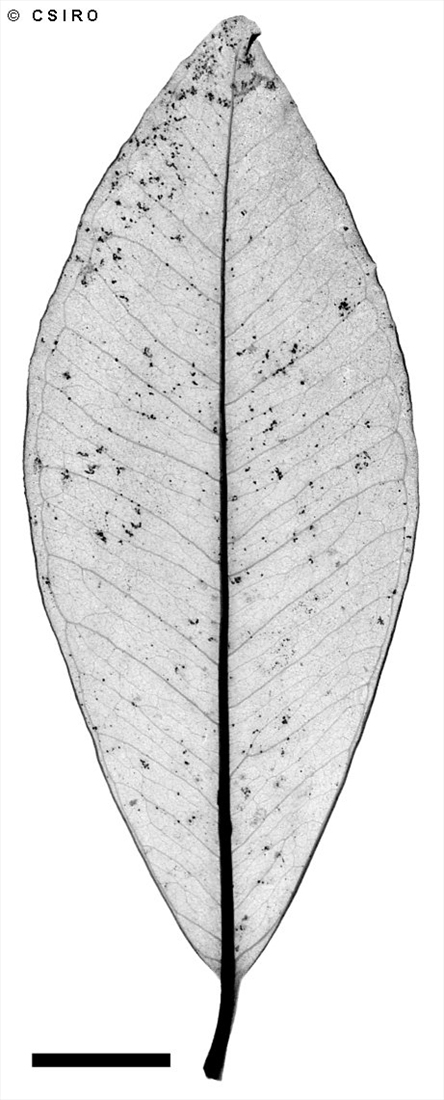Australian Tropical Rainforest Plants - Online edition
Backhousia hughesii C.T.White






White, C.T. (1936) Proceedings of the Royal Society of Queensland 47: 61. Type: Daintree River, Apicos Hughes.
Stony Backhousia; Stonewood; Limewood; Grey Teak
Numerous cream or pale brown, narrow, brittle stripes in the blaze. Blaze odour like that of freshly shelled peanuts (Arachis hypogaea). Scars on the stem often produce a grey coloured sap which sets into hard cement-like material which may be incorporated into the wood.
Inflorescence umbellate. Petals about 3-4 mm long. Anthers about 0.3-0.4 mm long.
Fruits about 3-4 mm diam., excluding the calyx lobes.
Endemic to NEQ, restricted to the area between Rossville and Innisfail. Altitudinal range from sea level to 1100 m. Grows in well developed rain forest on a variety of sites and is often associated with Kauri Pine (Agathis robusta).
Produces a useful general purpose building timber. Trees of this species when wounded produce an exudate which hardens to form a grey stony mass. Hence the name Stonewood. These stones can be produced inside the tree and were the subject of numerous profane comments from timber cutters who encountered them with a freshly sharpened chain saw.
Wood specific gravity 0.77. Cause et al. (1989).





